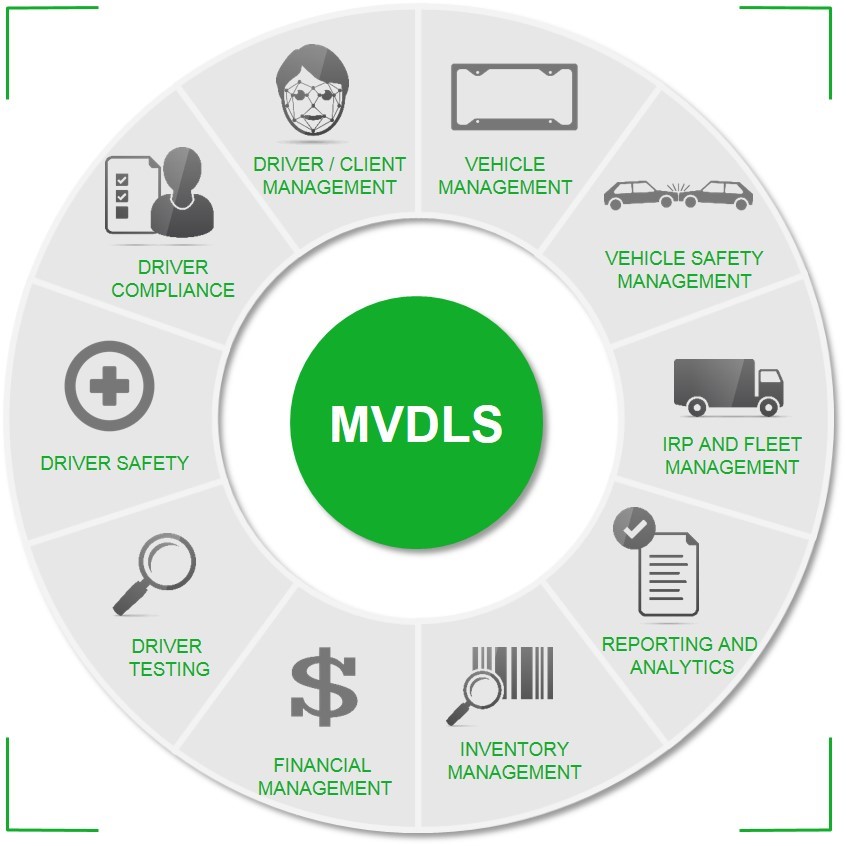In 2018, we have seen the rise and impact of technology, an organizational mindset shift towards customer centric thinking, a drop in unemployment rates, and a corporate focus on the employee experience (EX). Arguably, the added attention to the EX could have the most noticeable impact on our overall happiness. With unemployment at an all-time low, it’s a candidate’s market, and happy employees mean happy customers, which means increased productivity, revenue, and organizational growth.

Government heads, in particular, are keen to align their EX program with the employment trends of 2018 through DMV Modernization. Our last blog on DMV modernization discusses how MVDLS (Motor Vehicle and Driver Licensing Solution) will transform traditional DMV business processes into new digital services that offer the consumer flexibility of channel choice. In this blog however, the focus shifts to the DMV employees and how MVDLS revolutionizes the employee experience to meet three major workplace trends in 2018.
Workplace Trend 1: Companies focus on upskilling and retaining current workers
DMVs face the burden of under-staffing and the consequence of increased demand on current staff, but they are not alone. According to a study conducted by the Bureau of Labor statistics, 60% of all employers have job openings that stay vacant for twelve weeks or more, and this costs them $800,000 per year in lost productivity and advertising fees. At a DMV office, this can translate to slower lines, complicated training programs for employees, and a general drain on employee happiness and resources. The solution? Find efficient ways of upskilling staff and initiate programs that ensure staff retention.
It makes sense then, that DMVs are investing in system modernization projects such as MVDLS, as it is built with the DMV employee needs at the heart. The system, on a global level, is architectured in a way where transactions can be done more efficiently, which gets customers in and out faster. It makes training easier and more effective since the interface is setup in a way that is intuitive, making it difficult to make mistakes as employees – even those with limited experience – are walked through each step of the transaction by the system.

These changes mean that customers are happier and that interactions are enhanced by the operational ease. Employees have the opportunity to be personally invested in and to feel less drained by their day to day tasks. Employees that feel that they matter are more engaged and more likely to stay with their current employer.
Workplace Trend 2: The decisions made in the workforce sway the consumer’s behavior
A study conducted by Career Arc found that even a job candidate’s experience sways consumer behavior, drawing a direct link between a positive employee and/or candidate’s experience and revenue. In fact, they found that 64% of job seekers say that a bad candidate experience would make it unlikely for them to purchase goods or services from that employer. The DMV, just like any other business, depends on the general population for their prospective employee pool. However, because the vast majority of people of working age will have already conducted business with the DMV, a negative customer service experience could lead to a lack of interest in potentially being employed there later on. This potential decrease in desire for prospective employment limits the candidate pool for a DMV and could prevent them from being able to hire more discerning and motivated staff, which in turn creates a cyclical effect of potential future customer interactions that are less favorable.
With technology enabling new services in every industry, new goods and services are always just around the corner. Successful adoption of these goods and services means that consumers need to be on board, and more importantly, employees need to be bought in to drive innovation. The government sector is on the forefront of the incorporation of technological advancements, which is why DMVs are turning to MVDLS to produce new digital services and products, and more importantly ensure consumer and employee buy-in.

MVDLS frees up time and resources through system integration, and enables new services that increase security, flexibility, and overall operational function. More comprehensive MVDLS operational modules allow DMVs greater operational control and management of formerly disparate, disconnected systems, from the time a customer walks in the door until the time they leave. DMVs can provide services faster, with lower resource investment, and have fewer vendors to manage. This means that DMVs have more time to consider new technological investments like a Digital Driver’s License or e-vehicle registration. But it’s not just about having the funds and time to invest in new services. It’s about having employees who spearhead and drive the consumer engagement and creating an ecosystem of engaged consumers.
With the DMV employee needs at the heart of MVDLS, employees are happier and more engaged, setting DMVs up for successful product launches and the best possible public response for new initiatives.
Workplace Trend 3: Technology will continue to influence the workplace
Respondents to a recent survey stated that they see the development of new technology as the most important megatrend influencing the workplace between now and 2020. The impact of new technology means there are frequent market demand shifts, requiring a great deal of organizational flexibility. The only way to really stay flexible is to rely on new technology to meet new demands. Meaning, organizations need to integrate their data sources in order to have the most efficient BI systems. Consequently, this means that EX focus should already be on developing a network between employees and offices and a standardized experience across the organization.
As MVDLS overhauls the IT systems at the DMVs and integrates program components, it enables DMVs to deliver a better experience to clients, partners, and employees. New driver, client, vehicle, financial, and inventory management tools enabled through MVDLS allow employees to benefit from a more standardized approach. This new experience available for DMV employees is only made possible by the adoption of new technology in the workplace, specifically designed to support the experience of consumers and employees alike.

In conclusion…
It’s true, the employment trends in 2018 seem to point to positive changes for employees, employers and customers alike. With an increased focus on employee engagement, employers are challenged by evolving to meet the technological demands, in tandem with the employee demands of the 21st century. More than ever, we realize the need to empower employees as the driver of new products and services to get the consumer on board. It’s exciting to think about the doors that will be opened when employees are motivated to be innovative, and this is never truer than in the government sector, a sector that affects us all in one way or the other as citizens. MVDLS is built with employee needs at its heart, and this means that the possibilities for DMV innovation, employee satisfaction, and ultimately consumer satisfaction are endless.
What other employment trends from 2018 do you think MVDLS caters to? Let us know what you think by tweeting us at @gemalto_na or by commenting below.
Also, for more information about how MVDLS will benefit your employees or customers, please check out our Key Benefits and Details PDF.


